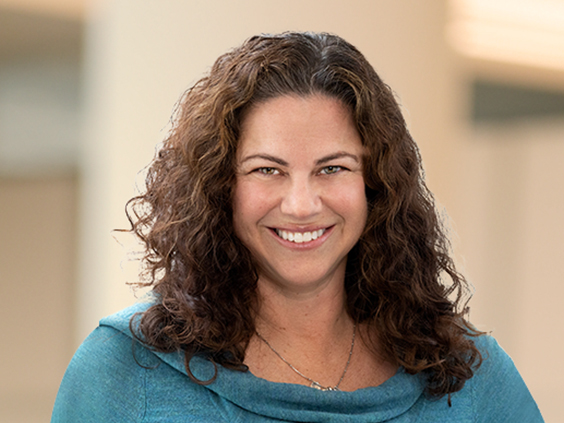Key takeaways
- Practice intentional philanthropy by carefully choosing where to donate your time, skills, and money to maximize impact, regardless of your financial means.
- Support organizations that represent your personal values so you’ll have a stronger connection.
- Explore the 5 T’s of philanthropy: Time, talent, treasure, ties, and testimony.
- Create a multiyear giving plan that syncs with your budget.
Do you remember your last donation? Was it a bake sale? A PTA auction night? Alumni tailgate? Giving Tuesday? Or maybe just hitting that Donate button on your friend’s social media post. It’s a lot, right? According to the Wells Fargo 2024 Giving in America report, almost half (49%) of Americans say they are constantly bombarded with donation requests.
According to the study, 57% of Americans want to be more strategic in their charitable giving. “Giving is never easy. Even the wealthiest struggle with how to do philanthropy well,” said Stephanie Buckley, head of Philanthropic Services with Wells Fargo Bank, N.A.
Here’s how to take your giving from reactive to proactive.
What is intentional philanthropy?
Being purposeful about your giving means carefully choosing where to donate your time, skills, and money to maximize the impact, regardless of your financial means.
“Not having a plan can often lead to a ‘smear the peanut butter’ approach, where people write checks and donate without thinking about how it aligns with what’s important to them,” said Buckley. “Having a plan can help block out some of the noise so you are giving with intention.”

1. Identify your goals and charities to support
Almost half of Americans are motivated to give to charity because it makes them happy. Strive to support organizations that represent your personal values. When you have alignment between your values and your giving, philanthropy can move from transactional to transformational.
According to Buckley, donors’ outlooks are often based on events that happened when they were young. Buckley’s first-generation-American mother was intent that her children understand that education was the way up. “Now I support scholarships that give students a chance to continue their education,” she said.
Once you’ve selected the causes you want to support, investigate charities whose missions align with your values. Carefully consider organizations based on how transparent they are about their goals, methods, and outcomes. For national charities’ background and management practices, check CharityWatch.org and Give.org. For local charities, you may need to reach out to them personally to get the information you want.
If you’re eager to see the results of your commitment, look to smaller, local organizations, where you can “get a bigger bang for the buck,” said Buckley. Sit down with leaders to discuss long-term goals so you can support them effectively. Ask if there is a specific need that hasn’t been fulfilled, such as delivering 10 dog beds to an animal shelter or upgrading classroom desks at a school. Narrowing your focus and considering larger gifts to a smaller number of organizations can lead to more significant change.
If you are certain that you want to benefit charity, yet are uncertain which charitable organizations you wish to benefit, a donor-advised fund can be a flexible option. With a donor-advised fund, you may get the benefit of an immediate tax deduction, but grants from the fund can be made over time.
2. Evaluate your assets
More than just money, philanthropy is not only about what you give but how you give. The 5 T’s of charitable giving can help you make a multifaceted impact at any level to improve lives and communities.
Think of this as your physical energy, in the form of volunteer hours, serving on committees, and attending events. It demonstrates your support for a cause and gives you direct insight into the needs and inner workings of an organization.
This is a great way to share the experience with your loved ones. Buckley tells of a teen who practiced driving with his mom while delivering meals to seniors, and of another family who would road trip together to transport adopted pets to their forever homes.
Share your knowledge, skills, and experience. For example, consider providing pro bono services in consulting, advising, or accounting, or become a mentor. You can also leverage this opportunity to try out a passion that could lead to a future job, such as graphic design, social media and marketing, or writing.
Consider donating money or other potentially valuable items, including appreciated stocks, bonds, real estate, collectibles, or vehicles to support nonprofits.
Leverage your connections and networks to forge new relationships. Introducing influential people with various skills and backgrounds can ignite collaboration.
Be an advocate. Amplify your impact by spreading the word of your engagement. Share your story of why you give or how you’ve been impacted by the organization’s work through social media or speaking at an event. You may inspire others to do the same.
3. Create your giving plan
According to the Giving in America report, 60% of Americans who gave last year are so committed to their giving that they list charity as part of their budget. Consult with a financial advisor so your charitable budget is part of your overall plan, including when you’re retired, so you’re not dipping into necessary funds. This gives you the ability to say no or yes to an ask.
Consider a plan that extends beyond 12 months to 2 years or even 5 years, so you can potentially get the most out of tax savings. For example, if you make donations to a particular charity every year, you can make your normal contributions during the year but then prepay the entire subsequent year’s contribution in a lump sum in December of the current year. So essentially, you’re bunching two years’ worth of deductions in a single tax year and have no charitable deductions in the next year. Read more about bunching your deductions.

If you decide to provide financial support, think through any possible tax credit before you write out a check to an organization. “Cash is your most expensive asset to give because you already paid taxes on it,” said Buckley. For example, consider donating long-term appreciated assets like stocks, bonds, and real estate instead of selling the assets first and then giving the cash to the nonprofit. “This can provide more funds for your favorite charity,” said Buckley.
If you expect to realize capital gains in a certain year due to investment transactions or a sale of other assets, such as a business or real estate, consider implementing a charitable giving strategy to help reduce your tax bill.
Check if your employer offers charitable payroll deduction, which allows you to choose the charity and the amount you want to automatically deduct from your paycheck. This approach allows you to spread your gift out evenly over the course of a year and possibly take advantage of a company match.
It is important to review your charitable giving plan to ensure that you receive any available charitable deductions in the desired tax year. Your tax and other financial advisors can outline strategies to consider.
Read about ways to potentially pay less taxes, now and throughout the year.
Joining a board
Consider serving on an organization’s board of directors for a literal voice at the table. Keep in mind that this commitment may come with financial expectations ranging from a few hundred to several thousand dollars. Here are a few things to think about before accepting a position on a board:
- Take time to learn about the organization’s mission, vision, and activities. Review its governance, leadership, and financial health.
- Ensure the organization’s goals and values genuinely resonate with you.
- Clarify what is expected of board members, including committee work, fundraising, oversight, and collaboration.
- Understand the legal and fiduciary duties involved. Ask about the organization’s financial standing, risk management practices, and documented procedures.
- Be realistic about the time commitment required and how it fits with your other priorities.
- Reflect on your reasons for joining the board and the unique contributions you hope to make.
If your organization manages significant assets or holds an endowment, partnering with an external investment manager, such as Wells Fargo Outsourced Chief Investment Officer (OCIO), can be a wise step. OCIO services offer specialized expertise and proven industry practices to help guide your organization’s investments toward long-term success.
An OCIO collaborates closely with the board to design investment strategies that align with your mission, values, and financial objectives. They also provide robust risk management, clear reporting, and support for the board’s fiduciary responsibilities.
By offering education, ongoing guidance, and regular updates, OCIOs help board members stay informed about investment decisions and monitor performance. Outsourcing investment management allows you and your fellow board members to focus on high-level strategy, governance, and fundraising, rather than the daily oversight of portfolios.
“We get to know your organization and build an investment strategy that reflects your mission and goals,” said Rob Farrington, Wells Fargo head of Institutional OCIO. “Our aim is to work alongside you, supporting long-term growth and resilience. This partnership helps board members manage financial responsibilities with confidence and focus on high-level priorities.”
To learn more about how a Wells Fargo OCIO can help your organization, contact philanthropic@wellsfargo.com.
Read What to know before joining a board for more tips and best practices.
Here are some hypothetical examples of giving plans in action
These plans show that becoming a philanthropist is more accessible than you may think. Even small, well-planned actions or the collaborative sharing of your expertise can make a meaningful difference.
Rafa, 27, accountant
Focus: Community revitalization
- Time: Spends weekends repairing homes in neighborhood.
- Talent: Provides pro bono bookkeeping and translation services to local small businesses.
- Testimony: Speaks at chamber of commerce functions.
Robyn, 38, banker
Focus: Local animal shelter; international wildlife conservation
- Time: Organizes events to bring in potential adopters to shelter.
- Treasure: Donates to international charity through her company’s payroll deduction program. Sets aside an additional amount to give to other causes as needs arise — or when she just feels like it.
- Ties: Recruits a member of her financial services networking group to sit on a shelter’s board.
- Testimony: Actively shares photos from nonprofit’s events on social media.

Aram and Becky, late 40s, tech executives
Focus: Their children’s school; up-and-coming tech professionals
- Time: Volunteer regularly at the school, both on campus and at events.
- Talent: Mentor younger employees at the company.
- Treasure: Donate vintage wines from their personal collection to the school’s fundraising auction. Bunch two years of school donations into one end-of-year amount. Donate stock to PTA. Establish donor-advised fund.
- Ties: Bring in tech professionals to teach coding to students.
What does your giving plan look like?






